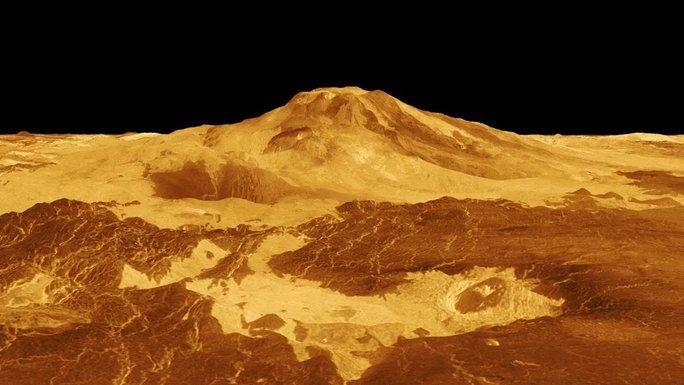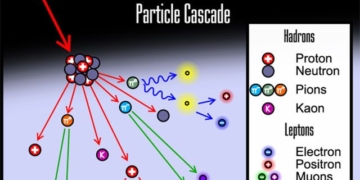A perfect replica of Earth, born in a habitable zone with a temperate climate… has turned into a hellish landscape with a suffocating atmosphere reeking of sulfur, all because of a phenomenon also present on our planet.
A new study led by Dr. Michael Way from NASA’s Goddard Space Flight Center reveals just how close our Earth came to disaster, allowing it to maintain its status as a habitable planet.
According to Space, the research focused on Venus, utilizing decades of data collected by NASA since the “exploration” by the Magellan spacecraft in 1990. From that first mission, Magellan discovered that much of the planet’s surface is covered by volcanic basalt.

Maat Mons, towering at 2 miles, is one of the largest volcanoes on Venus – (Photo: NASA).
This indicates that the planet has endured tens to hundreds of thousands of years of intense volcanic activity at some point over the last few billion years. Some volcanic events even lasted up to a million years.
Volcanoes are part of geological activity and are indeed necessary for a planet to maintain environmental and climatic stability. Our own Earth, through geological activity including dynamic plate tectonics, has contributed to nurturing a world suitable for life.
However, excess can be harmful, and excessively vigorous geological activity with volcanoes erupting has released enough carbon dioxide to push the climate beyond its limits.
Instead of providing the necessary temperature for life, this led to the boiling of oceans, causing them to evaporate into the atmosphere, with water vapor also being a greenhouse gas. Thus, the greenhouse effect intensified, and water was lost to space, leaving Venus as a barren world filled with carbon dioxide and sulfur.
“While we are not certain about the frequency of these events that create such conditions, we narrow it down by studying Earth’s own history,” Dr. Way stated.
Earth’s geological data also confirms the violent volcanic events that created vast basalt regions. It has even repeated in more recent times, with several supervolcanoes causing mass extinctions over the past half-billion years.
A close example is the Late Devonian extinction (370 million years ago) or the “volcanic winter” that contributed to the extinction of dinosaurs due to a meteorite impact triggering a series of disasters. Previously, the Triassic-Jurassic mass extinction event was attributed to the formation of the largest “igneous province” in the Mid-Atlantic.
Fortunately, Earth has not activated its volcanoes continuously for a long time or to the extent of Venus, allowing the climate to have a chance to recover alongside new forms of life continuing to evolve after major extinctions.
The recently published research in the Planetary Science Journal provides further evidence that the process of planetary evolution is a highly contingent event.
In fact, the Solar System produced three planets suitable for life: Venus, Earth, and Mars, all of which show evidence of ancient oceans and even ancient life, but currently, only Earth is known to have life.
Returning to Venus, the planet once considered the most Earth-like at its inception, NASA plans to explore it further in the upcoming DAVINCI mission, a mission that will investigate the detailed chemical composition of Venus’s oppressive atmosphere and capture images of it.
Additionally, there is the VERITAS mission from NASA and the EnVision mission from ESA (European Space Agency), both intended for launch in the 2030s, along with China’s VOICE mission, which is set to launch in 2027.





















































